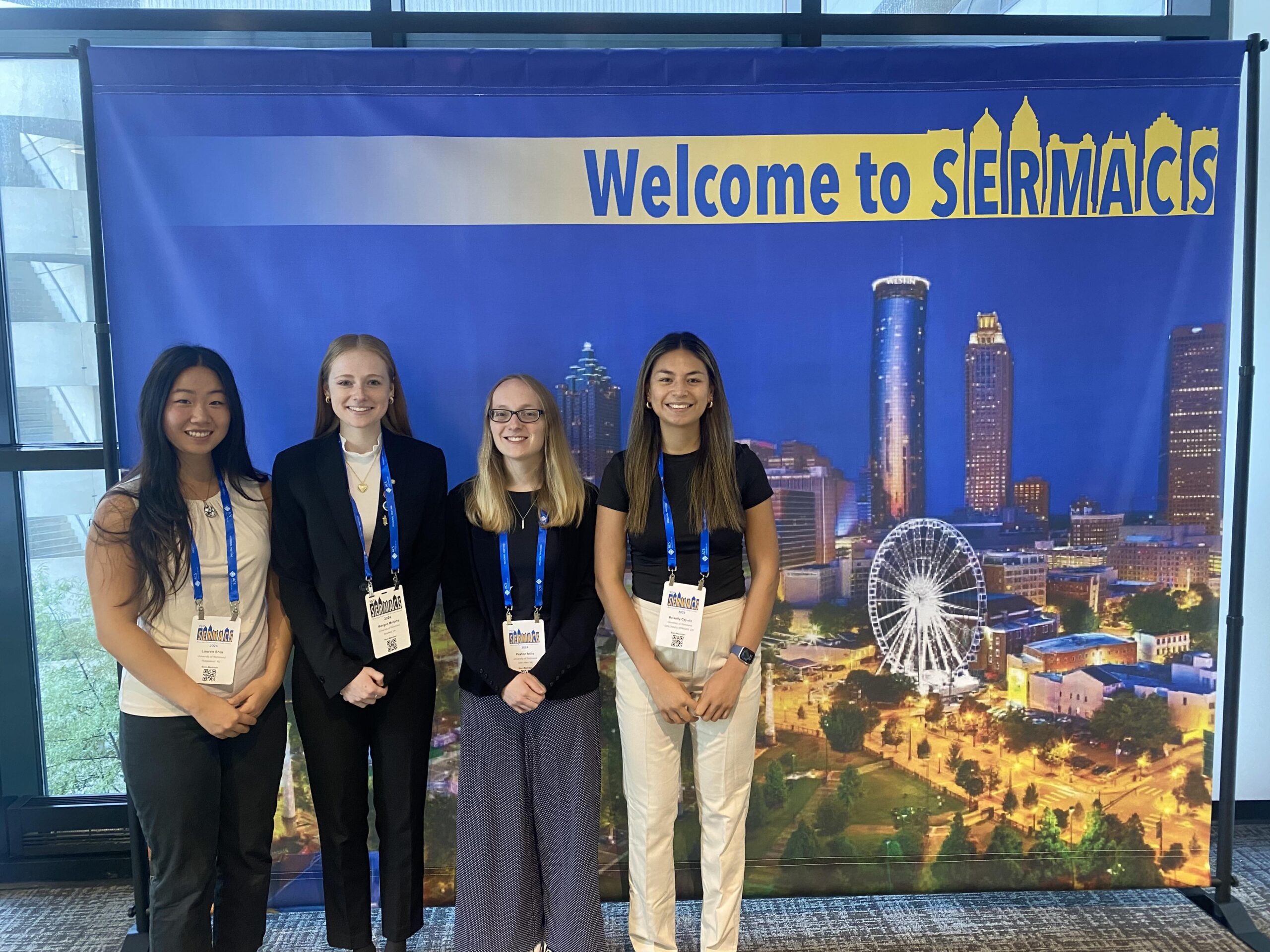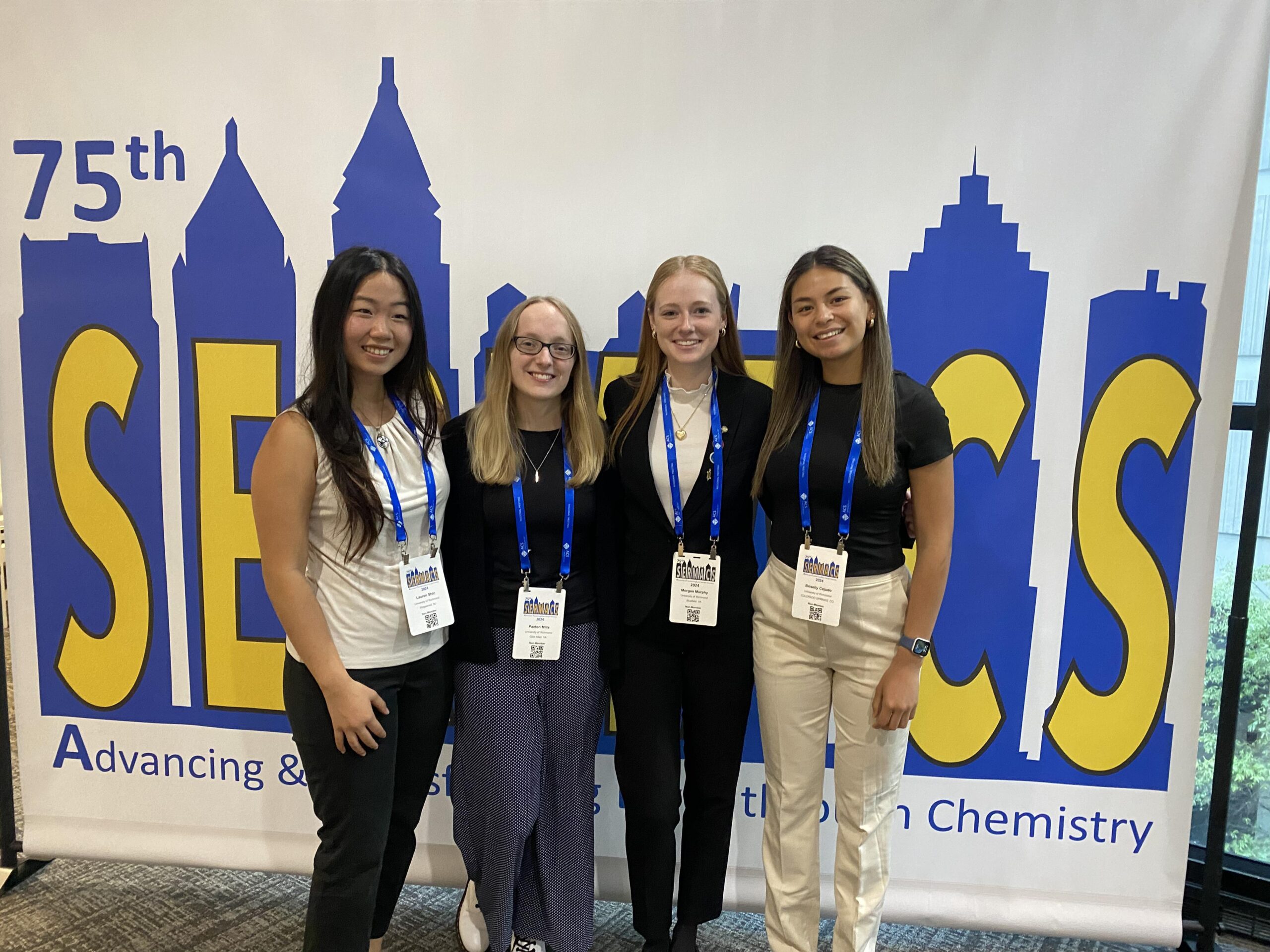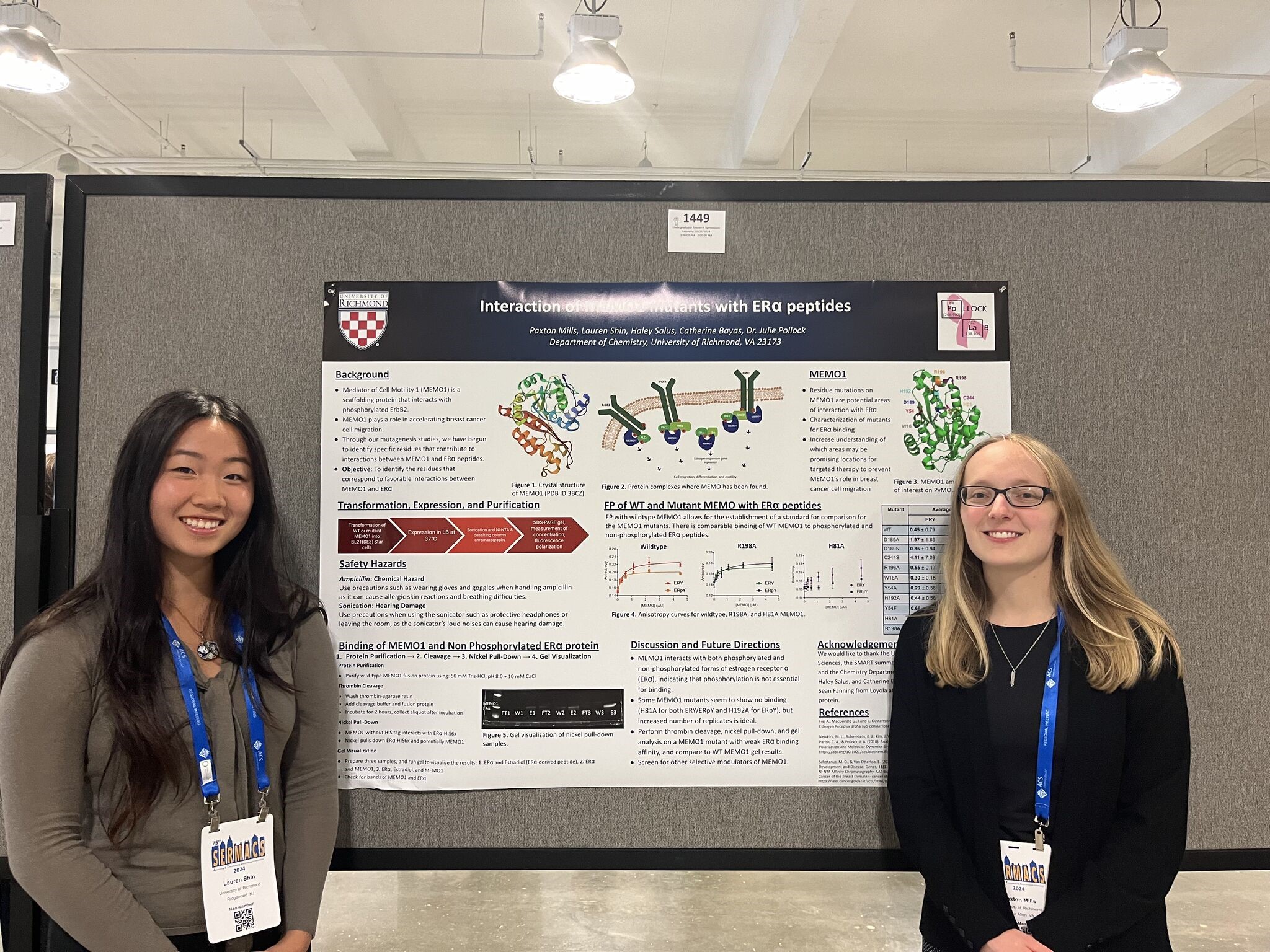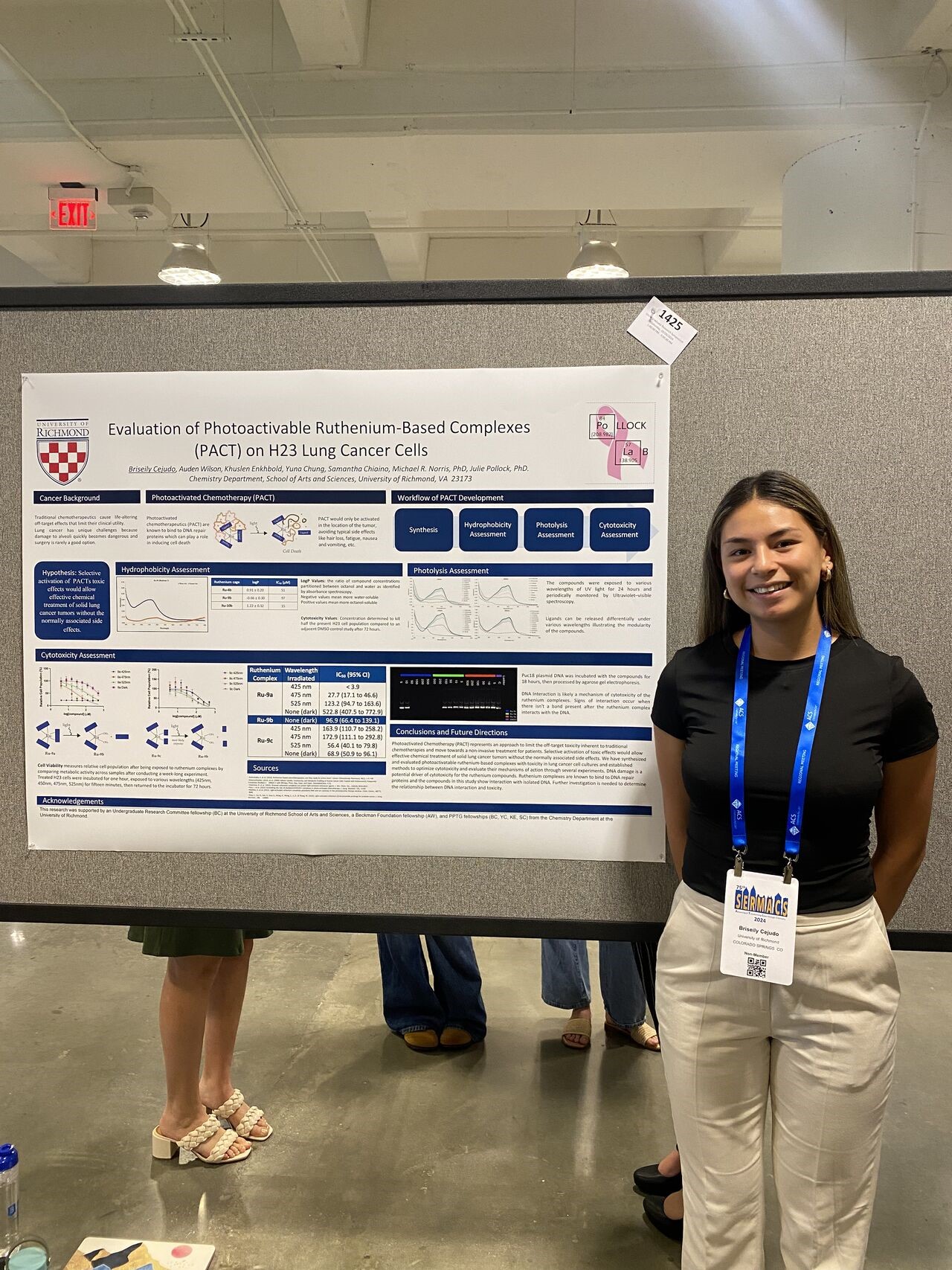In October, four amazing women represented the lab by attending SERMACS in Atlanta, GA. They presented their research, networked with other chemists, and got to experience the world of scientific conferences. Unfortunately because of other travel obligations this fall, I was unable to attend with them. Nonetheless, I am so proud of them and all of the work they have accomplished!
Let’s look at some pictures and hear from each of them about what they thought about SERMACS this year!


One of the talks I attended was by Professor Agarwal from Georgia Tech. His research focuses on a marine sponge called Halichondria bowerbanki, which hosts commensal bacteria on its surface. These bacteria produce proteins that help protect the sponge, mainly through disulfide bond formation in amino acids as a post-translational modification. This modification appears to increase toxicity, which in turn provides the sponge with a protective advantage. Professor Agarwal uses mass spectrometry to identify and quantify these proteins, combining chemical tools to sequence peptides and analyze their post-translational modifications. I found his research captivating as it highlights the complexity of enzyme mechanisms, even in seemingly “simple” organisms like ocean floor sponges.
Overall, I loved my first experience at a scientific conference and enjoyed presenting my research to others who are equally passionate about science, academia, and chemistry.
~Lauren Shin (BMB ’27)
At SERMACS 2024, I most enjoyed the talk given by Johnston entitled “Transcriptomic analysis of deferiprone-induced anticancer mechanisms in breast cancer models”. This talk was incredibly engaging in terms of the presentation itself and featured fascinating advances in biochemical research. Johnston first provided the necessary background on breast cancer prevalence, including disparities across various sub-populations and how the lack of expression of ER, PR, and HER2 can lead to cases that are more difficult to treat. The work itself investigated mechanisms to inhibit KDMs so that a cell’s chromatin remains protected, which subsequently decreases the likelihood of further unwanted transcription and cell proliferation. Similar to the work we do, this team is aiming to better understand molecular interactions in order to optimize conditions so that more effective therapies can be developed for difficult-to-treat breast cancers. I enjoyed the opportunity to hear from scientists across a variety of career development stages, especially during Breast Cancer Awareness Month in October. Being able to share our science at the undergraduate poster session was extremely empowering and left me excited to further explore topics within biochemistry and medicine.
~Paxton Mills (BMB ’26)
I enjoyed Mary Carroll’s talk during the SERMACS conference. She is the president of SERMACS. I enjoyed listening to her talk because she is a very well-spoken and accomplished woman. Aside from being the president of SERMACS, she also has her own business and is a professor. She is a very insightful woman that you can learn a lot from and it feels very inspiring to see women in important positions. It shows you that the effort to bring more women into STEM fields is working and will hopefully continue growing, myself included. Being at a conference like this made me excited to meet other people who are studying different fields within chemistry. I met a couple of professors from UNC-Chapel Hill who were quantum mechanics professors which is crazy to think about, but at the same time very enlightening and a very enriching experience to get to connect with professors that have very niche interests within quantum mechanics and other fields in chemistry.
~Briseily Cejudo (BIOL ’25)
I was privileged to attend the 75th Southeastern Regional Meeting of the American Chemical Society in Atlanta, Georgia. While there, I was surrounded by leaders in the field of chemistry and learned that chemistry is not only for chemists- it is for computer scientists, biologists, and physicists. Chemistry is for everyone!
While at the conference, I also attended various talks on current chemistry research. Although all were interesting, one especially stood out. It was titled, “Targeting the p38/Mk2 protein-protein interaction to control neuroinflammation in Alzheimer’s disease.” Alzheimer’s is the leading cause of dementia in the United States. The p38-Mk2 interaction induces neuroinflammation, which is known to contribute to Alzheimer’s. The research aimed to develop a new approach to target the interaction and thus reduce neuroinflammation. Binding characteristics were determined to do this, and a model was made. Binding positions were found, and a computational screening of more than 500 compounds was performed to identify inhibitors. Various assays were used to validate the interaction inhibition. The researchers hypothesized that p38/Mk2 protein-protein interaction inhibitors decrease cytokine levels in microglia; however, they expanded to ultra-high through screening to reveal potential inhibitors. Further screening will validate these findings.
This presentation caught my attention since it focused on proteins, just like mine; however, instead of focusing on proteins in antibiotic-resistant bacteria, the presented research focused on human disease. With further research, treatment for Alzheimer’s may be found. This would prove beneficial not only to the United States but to the world. Alzheimer’s is a terrible disease, not only for the patient but also for the family. With inhibitors of the protein interaction known to contribute to it, Alzheimer’s may, effectively, become non-existent.
I look forward to seeing new information that comes from this research!
~Morgan Murphy (CHEM ’27)




Recent Comments